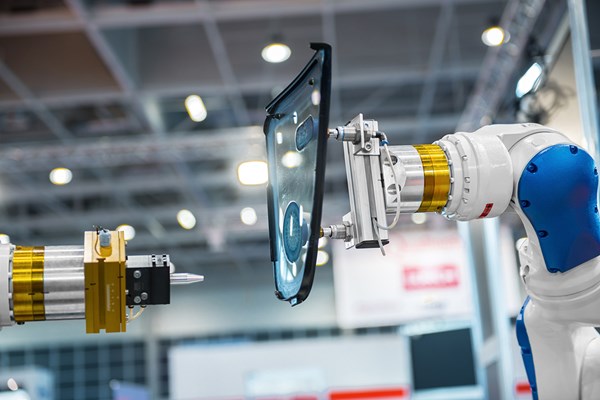Cobots are Coming
Today, we are seeing the emergence of collaborative robots that use sophisticated sensors that allow humans and robots to work together without the need for guarding.

Cobots are moving out from behind the cage.
Since it was first conceived in in the 1950s, the industrial robot has morphed from a machine that required a cage and other devices to separate it from humans. In recent years, that too has changed.
Since the 1960s, the automotive industry has been using robots successfully. As often happens, having proved themselves, robots have proliferated into shops of all sizes. Moreover, because of simplified programming, these machines are moving into non-traditional applications where high mix and relatively low volume production is the rule.
Today, we are seeing the emergence of collaborative robots that use sophisticated sensors that allow humans and robots to work together without the need for guarding. Instead of operating independently of the machine operator, these new machines are safe, and as such an even better helper for its human coworker. Click here to read an article we published on the topic.
Related Content
-
Replace Repetitive Measurement With DIY Robotic Automation
After minimal training, a shop can learn how to use this robotic inspection system configured for a shopfloor application to supersede repetitive, time-consuming, high-mix gaging processes. It can then be redeployed for another application somewhere else in the facility.
-
Tips for Troubleshooting and Repairing Chip Conveyors
A nonfunctioning chip conveyor can cause a high-production machine to be down for an extended period of time. Here is some troubleshooting advice if you’re having issues with your chip conveyors.
-
Inside the Premium Machine Shop Making Fasteners
AMPG can’t help but take risks — its management doesn’t know how to run machines. But these risks have enabled it to become a runaway success in its market.













